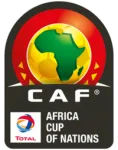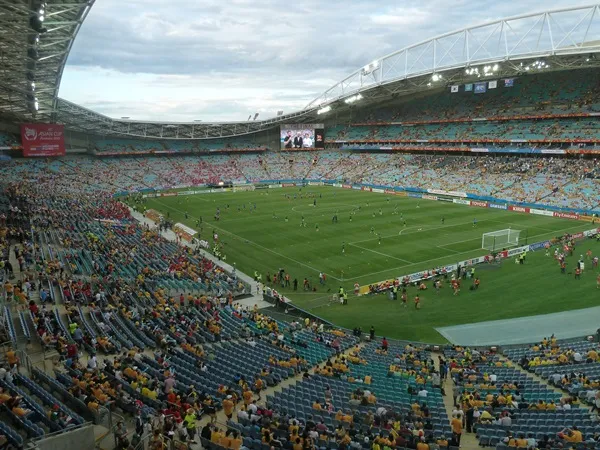- BETTING TIPS
- BETTING TIPS NAVIGATIONS
 Premier League
Premier League FA Cup
FA Cup League Cup
League Cup La Liga
La Liga Copa del Rey
Copa del Rey Super Cup
Super Cup Champions League
Champions League Europa League
Europa League Europa Conference League
Europa Conference League World Cup
World Cup Euro Championship
Euro Championship Nations League
Nations League Africa Cup of Nations
Africa Cup of Nations Copa America
Copa America International Friendly
International Friendly Confederations Cup
Confederations Cup Serie A
Serie A Coppa Italia
Coppa Italia Super Cup
Super Cup Bundesliga
Bundesliga Ligue 1
Ligue 1 DFB Pokal
DFB Pokal Super Cup
Super Cup Malaysia Super League
Malaysia Super League Coupe de France
Coupe de France Trophée des Champions
Trophée des Champions Pro League
Pro League
- Teams
- TEAMS NAVIGATIONS
 Premier League
Premier League FA Cup
FA Cup League Cup
League Cup La Liga
La Liga Copa del Rey
Copa del Rey Super Cup
Super Cup Champions League
Champions League Europa League
Europa League Europa Conference League
Europa Conference League World Cup
World Cup Euro Championship
Euro Championship Nations League
Nations League Africa Cup of Nations
Africa Cup of Nations Copa America
Copa America International Friendly
International Friendly Confederations Cup
Confederations Cup Serie A
Serie A Coppa Italia
Coppa Italia Super Cup
Super Cup Bundesliga
Bundesliga Ligue 1
Ligue 1 DFB Pokal
DFB Pokal Super Cup
Super Cup Malaysia Super League
Malaysia Super League Coupe de France
Coupe de France Trophée des Champions
Trophée des Champions Pro League
Pro League
- Fixtures & Results
- Fixtures & Results NAVIGATIONS
 Premier League
Premier League FA Cup
FA Cup League Cup
League Cup La Liga
La Liga Copa del Rey
Copa del Rey Super Cup
Super Cup Champions League
Champions League Europa League
Europa League Europa Conference League
Europa Conference League World Cup
World Cup Euro Championship
Euro Championship Nations League
Nations League Africa Cup of Nations
Africa Cup of Nations Copa America
Copa America International Friendly
International Friendly Confederations Cup
Confederations Cup Serie A
Serie A Coppa Italia
Coppa Italia Super Cup
Super Cup Bundesliga
Bundesliga Ligue 1
Ligue 1 DFB Pokal
DFB Pokal Super Cup
Super Cup Malaysia Super League
Malaysia Super League Coupe de France
Coupe de France Trophée des Champions
Trophée des Champions Pro League
Pro League
- Tables
- Tables NAVIGATIONS
 Premier League
Premier League FA Cup
FA Cup League Cup
League Cup La Liga
La Liga Copa del Rey
Copa del Rey Super Cup
Super Cup Champions League
Champions League Europa League
Europa League Europa Conference League
Europa Conference League World Cup
World Cup Euro Championship
Euro Championship Nations League
Nations League Africa Cup of Nations
Africa Cup of Nations Copa America
Copa America International Friendly
International Friendly Confederations Cup
Confederations Cup Serie A
Serie A Coppa Italia
Coppa Italia Super Cup
Super Cup Bundesliga
Bundesliga Ligue 1
Ligue 1 DFB Pokal
DFB Pokal Super Cup
Super Cup Malaysia Super League
Malaysia Super League Coupe de France
Coupe de France Trophée des Champions
Trophée des Champions Pro League
Pro League
- News
- News NAVIGATIONS
 Premier League
Premier League FA Cup
FA Cup League Cup
League Cup La Liga
La Liga Copa del Rey
Copa del Rey Super Cup
Super Cup Champions League
Champions League Europa League
Europa League Europa Conference League
Europa Conference League World Cup
World Cup Euro Championship
Euro Championship Nations League
Nations League Africa Cup of Nations
Africa Cup of Nations Copa America
Copa America International Friendly
International Friendly Confederations Cup
Confederations Cup Serie A
Serie A Coppa Italia
Coppa Italia Super Cup
Super Cup Bundesliga
Bundesliga Ligue 1
Ligue 1 DFB Pokal
DFB Pokal Super Cup
Super Cup Malaysia Super League
Malaysia Super League Coupe de France
Coupe de France Trophée des Champions
Trophée des Champions Pro League
Pro League
- Live ScoresLive
Australia
AustraliaVenue

CommBank Stadium
| City | : | Sydney |
| Capacity | : | 30,000 |
| Surface | : | Grass |
The Australia national football team, also known as the "Socceroos," represents the country in international men's football. While the team is relatively young in comparison to other global footballing giants, Australia has rapidly risen to prominence in Oceania and the broader global football landscape. Known for its tenacity, work ethic, and solid team spirit, the Socceroos have established themselves as a competitive side in international tournaments, including the FIFA World Cup, the AFC Asian Cup, and the OFC Nations Cup.
Early Years of the Australia National Team
Football was introduced to Australia by British settlers in the 19th century, but the national team did not play its first international match until 1922, a 2-3 loss to New Zealand. Early on, Australia faced challenges in establishing itself as a footballing nation, as the country was primarily focused on sports like rugby and cricket. However, over time, football grew in popularity, and the formation of the national team became a crucial milestone in Australia’s sporting history.
The Rise of the Socceroos
In the 1950s and 1960s, Australia started to make its mark in international football. The Socceroos first entered the World Cup qualifying stages in the 1960s, and although they did not qualify for the tournament itself, their presence in these early competitions laid the groundwork for the team’s future success. During the 1970s, Australia began to develop a stronger footballing identity, with the establishment of the National Soccer League (NSL) in 1977, which brought more attention to the sport.
Match Predictions
- Tamworth vs. Leyton Orient Predictions & Betting Tips on Nov 04 - 03:30 AM
- Sunderland vs. Everton Predictions & Betting Tips on Nov 04 - 04:00 AM
- Tottenham vs. Manchester United Predictions & Betting Tips on Nov 08 - 20:30 PM
- Everton vs. Fulham Predictions & Betting Tips on Nov 08 - 23:00 PM
- West Ham vs. Burnley Predictions & Betting Tips on Nov 08 - 23:00 PM
Joining the AFC: A New Era for Australia
Australia’s move from the Oceania Football Confederation (OFC) to the Asian Football Confederation (AFC) in 2006 marked a new era in Australian football. This move allowed the Socceroos to compete at a higher level of competition, facing stronger teams in the AFC Asian Cup and World Cup qualifiers. The shift to the AFC has been instrumental in improving the national team’s performances, with more frequent and competitive fixtures against top Asian sides like Japan, South Korea, and Iran.
Australia's World Cup Journey
The Socceroos have participated in multiple FIFA World Cup tournaments and have built a solid reputation as a resilient and competitive team. Australia’s World Cup journey is a testament to their persistence and determination to compete on the world’s biggest stage.
1974 FIFA World Cup: Australia’s First Appearance
Australia’s first-ever World Cup appearance came in 1974 in West Germany. Although the team did not make it out of the group stage, their participation was a historic moment for Australian football. It was the beginning of Australia’s long pursuit of greater success on the global stage, despite the challenges the team faced in the early years.
2006 FIFA World Cup: The Socceroos’ Breakthrough
The 2006 FIFA World Cup in Germany marked a significant turning point for Australia. Under coach Guus Hiddink, the Socceroos reached the knockout stage of the World Cup for the first time in their history. A thrilling 2-2 draw against Croatia and a dramatic 1-0 win over Uruguay in the qualifying playoffs helped Australia qualify for the tournament. Their strong performance in 2006 brought global attention to Australian football and showcased their potential on the world stage.
2010 FIFA World Cup: A Solid Showing
In the 2010 FIFA World Cup in South Africa, Australia’s national team demonstrated resilience, even though they were eliminated in the group stage. The Socceroos earned a hard-fought 2-1 win over Serbia, but defeats to Germany and Ghana left them short of progressing. Nevertheless, the 2010 World Cup experience was valuable for the development of Australia’s football program.
2014 FIFA World Cup: A Tough Challenge
The 2014 World Cup in Brazil was a challenging tournament for Australia, as they were placed in a tough group alongside the Netherlands, Chile, and Spain. Despite losing all their group-stage matches, the Socceroos showed remarkable courage and determination. Their 3-2 loss to the Netherlands in the group stage was particularly memorable, as they pushed one of the tournament favorites to the limit.
2018 FIFA World Cup: A Historic Performance
In the 2018 FIFA World Cup in Russia, Australia showed improvement from their previous tournaments. Although they were eliminated in the group stage, the Socceroos managed to earn a crucial 1-1 draw against Denmark. Their performances continued to reflect the team’s resilience, and while they did not advance past the group stage, the 2018 World Cup laid the foundation for the team’s future progress.
The AFC Asian Cup: Australia’s Regional Dominance
The AFC Asian Cup is Asia’s premier football tournament, and the Socceroos have consistently been one of the strongest teams in the competition.
2015 AFC Asian Cup: Australia’s First Title
In 2015, Australia won their first-ever AFC Asian Cup title, which they hosted on home soil. In the final, the Socceroos defeated South Korea 2-1 after extra time, marking a monumental achievement for Australian football. The victory was a symbol of Australia’s growing footballing stature in Asia and showcased the team’s ability to compete with the continent’s best teams.
2019 AFC Asian Cup: A Strong Campaign
The 2019 AFC Asian Cup saw Australia perform well, though they were eliminated in the knockout stage by the United Arab Emirates in a penalty shootout. Despite the disappointment, the tournament showed the potential of Australia's young talent, with several new players stepping up to the challenge.
Key Players in Australia's Football History
Australia has produced many notable footballers who have made significant contributions to the success of the national team. These players have excelled both domestically and internationally, bringing attention to Australian football around the world.
Tim Cahill: Australia’s Leading Goal Scorer
Tim Cahill is arguably Australia’s greatest footballer. With 50 goals in 108 appearances, Cahill is the Socceroos' all-time top scorer. His ability to score crucial goals in international tournaments, including the World Cup, has earned him a legendary status in Australia’s football history. Cahill played a vital role in Australia’s success, notably during the 2006 World Cup.
Mark Schwarzer: Australia’s Goalkeeping Legend
Mark Schwarzer, one of Australia’s greatest goalkeepers, earned more than 100 caps for the Socceroos and played in four World Cups. His consistent performances at the highest level for both Australia and his club, including stints in the English Premier League, cemented his legacy as one of the best goalkeepers in Australian football history.
Mile Jedinak: Captain and Midfield Leader
Mile Jedinak was the captain of the Socceroos for several years and played a pivotal role in their midfield. Known for his leadership, defensive qualities, and ability to score crucial goals, Jedinak’s presence in the middle of the park was vital to the team’s successes in both the World Cup and the AFC Asian Cup.
Australia’s Football Culture and Development
Football in Australia has grown in popularity over the years, driven by an increasing number of youth players, professional leagues, and a broader emphasis on developing football talent. The A-League, established in 2004, is Australia’s premier football league and has played a significant role in promoting the sport domestically.
The country’s commitment to football development at the grassroots level has led to a steady rise in talent, with players now emerging from all over the country. The Socceroos’ success on the international stage is a reflection of Australia’s growing football culture, which continues to develop new generations of talented footballers.
The Future of Australia’s National Football Team
The future looks bright for the Socceroos, with young players like Awer Mabil, Daniel Arzani, and Mathew Leckie showing great potential. As the team continues to evolve, the next generation of Australian footballers is expected to carry the torch and compete for major international trophies in the years to come.
Conclusion: A Team on the Rise
Australia’s national football team has come a long way since its early days. From their first World Cup appearance in 1974 to their Asian Cup triumphs and World Cup campaigns, the Socceroos have proven that they are a force to be reckoned with in global football. With a blend of experienced players and emerging talent, Australia’s football future looks promising, and the Socceroos are poised to continue making their mark on the international stage for years to come.
News & Updates


